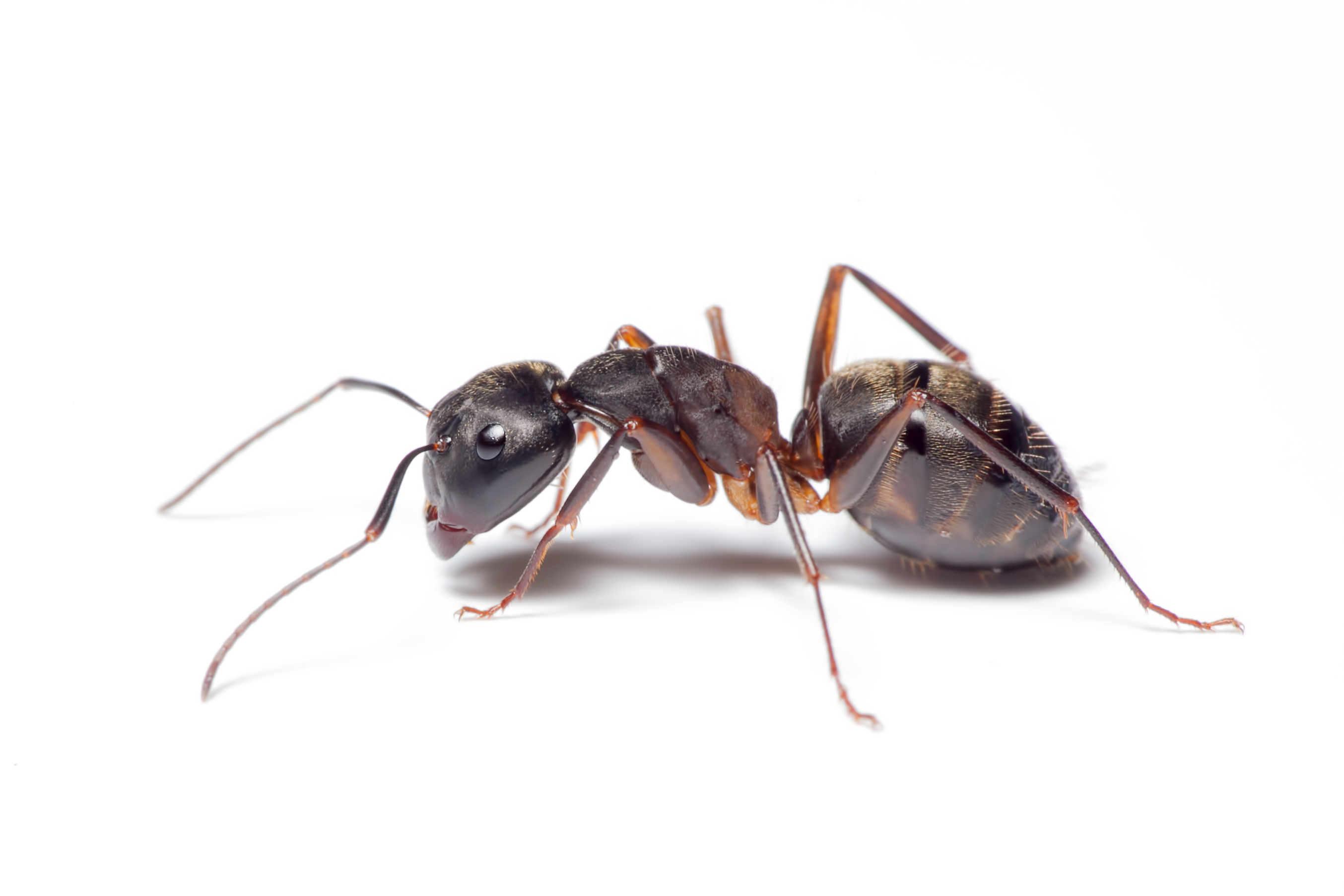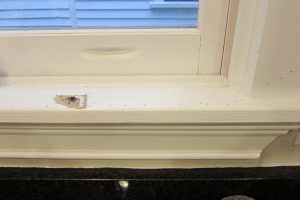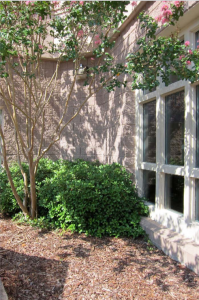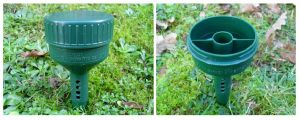
Ant season is upon us, and it’s likely you are up to your ears in complaints from teachers and staff seeking some relief from ant invasion.
Know your enemy. The first order of business for successful ant management is knowing what ant species you’re dealing with. If you are having trouble identifying the species present, refer to this fact sheet: https://content.ces.ncsu.edu/a-guide-to-house-invading-ants-and-their-control. You may also submit insect specimens to NCSU’s Plant Disease and Insect Clinic (https://projects.ncsu.edu/cals/plantpath/extension/clinic/). There is a $30 fee to submit a sample.
Control. Ants invade homes and other structures in search of food, water, and shelter. Therefore, effective ant management needs to be a combination of control methods that involve inspection, sanitation and exclusion, habitat modification, and often some type of insecticide.

Inspection. It is important to check carefully and thoroughly both indoors and outside to determine areas of ant activity, nest locations, and type of ant present. Indoors, follow ant trails to locate their entry point(s). You may consider placing a nontoxic food bait in these areas to establish a trail that you can follow (Figure 1.) Although this will take extra time, it may pay off in those situations where your control efforts have not been effective so far.
Outside, check the foundation, walkways, trees and shrubs, and in mulched areas for ant trails. Look for nests in mulch and vegetation next to the foundation. Check under patio blocks, stepping stones, and in piles of rocks, lumber, and other debris. Inspect the foundation to find possible ant entryways such as areas where pipes enter the building, foundation cracks, and around doors and windows.
Sanitation and Exclusion. Removing or reducing indoor sources of food and water can help reduce ant activity indoors. Susceptible food items should be stored in pest-proof containers or stored in the refrigerator. If possible, any class pet food should not be left out continuously. Wiping down indoor surfaces, such as floors and countertops, with soapy water is helpful in a couple of ways. First, the soap removes food residue that may be attracting the ants. Secondly, it disrupts the ant pheromone trails that are leading more ants indoors. Don’t forget to check for leaks or plumbing issues that could be drawing ants indoors.
Exclude ants from entering the structure by sealing up any gaps, cracks, or holes around windows, doors, and foundations.
Habitat Modification.Habitat modification involves landscaping and other activities that can reduce the likelihood of ants nesting in areas around buildings. For example, mulch often provides an excellent nesting habitat for many ants. It provides shelter, warmth, moisture and it can prevent pesticide sprays from reaching their intended target.
Mulch, leaf litter, and vegetation should be kept 10-12 inches away from the foundation. Piles of lumber, bricks, stones, or other debris should be stored away from buildings as well.

Many ants are attracted to the sweet plant secretions and fruits/berries of ornamental trees and shrubs. Ants also feed on “honeydew” – a sugary material secreted by aphids and other insects often found on ornamentals. Trim back any tree branches or shrubs that are touching the house so that ants cannot use them to get around pesticide treated areas and enter the building (Figure 2). Controlling honeydew-producing insects on ornamental trees and shrubs will help reduce ant food sources.
Insecticidal Control. Simply spraying foraging ants may bring temporary relief but most often it fails to provide long-term, effective control. The most effective ant control is accomplished by locating and destroying the nest(s). Sometimes the nest can be found by following the foraging workers back to the nest site. Once the nest is found you can spray or drench it with a spray or granular insecticide. Or you may treat the nest using a bait; just remember baits are slower acting.
While finding and destroying the nest is the most effective control strategy for ants, finding the nest is not always possible. Many pest ants we deal with do not make large, discreet nests (e.g., Argentine and odorous house ants). And these ants often have multiple nests spread out over the landscape. Therefore, finding and treating each nest may not be possible. In those cases, you can apply an insecticide outdoors to help reduce ant populations and possibly keep ants from invading the home. Spray any known or suspected ant entryways: gaps around doors and window frames, cracks in bricks and foundations, around crawl space doors, foundation vents and utility openings, and under siding. In addition, you may apply a protective barrier or perimeter around the building.

You may also need to spray indoors for ants. If that is the case, stick with crack-and-crevice applications and spot treatments, wherever possible (Figure 3). Try to limit your indoor spraying to known or suspect areas ants are using to access the building.
When choosing an insecticide, you have the option to apply a repellent or non-repellent product. Understanding the difference between repellent and non-repellent insecticides will help you determine which formulation is best suited for the situation.
Fast acting pyrethroid insecticides, like Demand® CS, are considered repellent products because they create a barrier and act quickly to prevent ants from maintaining a pheromone trail. The resulting distraction from their trail gives the appearance that they have been repelled, even if a product formulation limits repellency.
Slower acting insecticides, like Termidor®, are considered non-repellent products and take longer to knock down an insect. Insects cross over surfaces treated with these insecticides and return to the nest before they are affected, thus maintaining a trail and encouraging more ants to come in contact with the same treatment. In addition, foragers that have contacted the chemical may “transfer” some of the chemical to other colony members through grooming and feeding activities.
Both formulations have pros and cons. Fast-acting repellent insecticides are excellent for creating chemical barriers around structures, but a thorough application is crucial. The chemical must penetrate heavy vegetation, ground cover or mulch and reach the ground so that foraging ants come in contact with the treatment. In such cases, the use of a granular insecticide like Demand® G may help move the active ingredient through the vegetation or mulch where it can create a complete barrier to insect movement. Just remember that granular formulations need to be watered in.
The slower action of non-repellent insecticides is great because it does allow foragers to get some of the chemical back to the nest where other ants can be exposed to it. On the other hand, because ants will move more readily through the insecticide, teachers and staff may likely continue to see ants indoors (at least for some time).
Whether you use a repellent or non-repellent insecticide will depend on each unique situation. What ant species is/are present? How tolerant are those involved? How bad is the infestation? Etc., etc. In addition, communicating with and educating teachers/staff on your decision will be key, regardless of what product you choose.
The other obvious treatment option for ants is baiting. Bait may be applied indoors and outdoors. When baiting indoors, you should expect to see ants at or near the bait. Again, this is where communication and education are key. If you are dealing with someone that has low tolerance, try to place the bait in out-of-sight areas. Or, you may choose to bait outdoors only.
Before you spend a lot of time (and money) on a complete bait application, make sure the ants accept the bait. Once you find an acceptable bait, place it at or near areas you are seeing ant activity. And be sure baits are placed away from areas you have applied a spray or granular insecticide.

For ant species that tend to present in high numbers, such as Argentine and odorous house ants, you may consider placing a liquid, sugar-based bait outdoors in plastic bait stations (Figure 4). Be sure to place bait stations out of the reach of children. Many times baits are not effective simply because a sufficient amount is not put out to account for the large infestation. Carpenter ants and red imported fire ants seem to accept granular baits quite well. But again, because food preferences can change for ants, depending on the season and other food availability, it’s always a good idea to make sure the ants are accepting what you are offering before you apply it everywhere.
In summary, treating for ants will be most successful when you first determine what ant species is present. Good sanitation, exclusion, and habitat alteration practices are necessary as well. And finally, choosing the correct chemistry and insecticide formulation(s) is key – and that will be decided by each unique situation.
